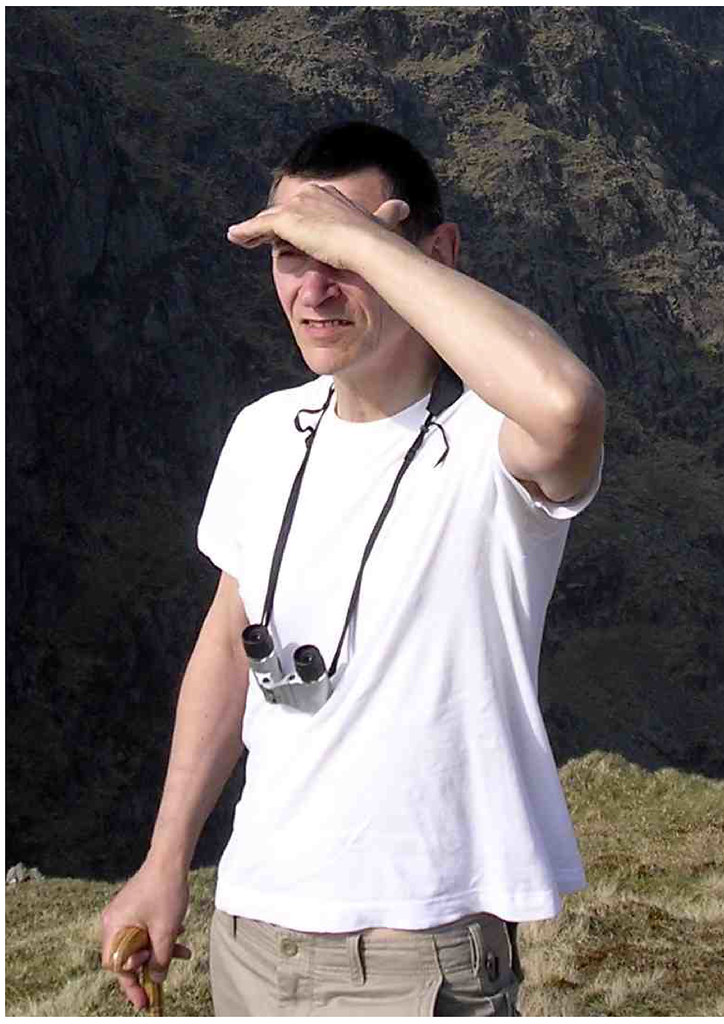I was introduced to the idea of a bronze mirror by a friend, Ping-Kern Ng, and after this idea fermented a little I sawed out two 150mm discs of 1.7mm thick silicon bronze supplied by Columbia Metals Ltd, taped them together and then sawed out an arc for the hinge about 20mm from the edge. The ensemble was clamped in a vice with the cut uppermost, and I used a graver to cut out a groove for a 3mm hinge. Later in the process I swapped from a graver to a home-made chisel using 3mm diameter silver steel, the end cut at 45 degrees and hardened. I made some 3mm diameter silicon bronze tube from sheet then sawed five bronze knuckles for the hinge from it, wired them to the bronze disks and tacked them with solder.
The discs were carefully taken apart after cooling, pickled and dried, then I had to 'flush' the solder for all the knuckles. Each disk was separate fluxed at the knuckles and heated until the solder ran under all areas of each knuckle. Unfortunately, this warped both sheets to various extents.
The most warped mirror plate was jammed between two steel plates and heated to 550C in a furnace to flatten it, then both mirror plates were carefully fitted together and flattened again in the same way, resulting in virtually a perfect fit. I then had to correct a slight warp / misalignment on a couple of the knuckles as in the last picture, in which I used graphite pencil leads as a core to maintain stability before reheating to melt the solder (which was virtually pure silver).
The pictures below show the face which I polished (along with a more photogenic view than usual of the maker and his camera) contrasting with the other faces, which I did not. In fact, on the outside one face has an oxide 'design' which I may well decide to amend.
2012-12-26
Reflections of an amateur mirror maker
Posted by
Paul Jelley
at
21:33
0
comments
![]()
![]()
2012-12-23
Boxes, yet more boxes, and bowls
Another 10 days of silversmithing spread over 10 weeks and I now have a collection of 7 boxes in various stages of completion and in various alloys; gilding metal (3 boxes), nickel silver, sterling silver, silicon bronze and phosphor bronze. And another two gilding metal bowls and a silicon bronze mirror (see next post). Below left is the silicon bronze box, the pin has been left untrimmed for ease of removal of the lid. I have inserted a complete inner box, primarily to hide the solder seams which were more unsightly than usual and almost impossible to clean up (although they can be plated). I have not as yet fitted any kind of catch (that's something I still have to learn about!). The colour after sanding etc is actually a bright golden yellow, not the red-brown in the photo that is typical of an acid-pickled appearance and is due to copper enrichment of the surface. The acid (dilute sulphuric) dissolves the black copper oxide formed during all heating operations, but doesn't dissolve the copper (which from this point of view is regarded as a noble metal). It also seems to dissolve in some way some of the alloy ingredient (in this case silicon, in the case of the gilding metal boxes it is zinc) leaving the copper-rich surface behind. This is generally called depletion gilding, although it would better be called depletion coppering in these cases! The picture to the right is a rear view to show the flush hinge, with the knuckles filed down flush with the side wall; this required that the hinge groove be very carefully placed, too deep and the lid wouldn't open far, too shallow and filing the knuckles flush would expose the hinge pin.
Pictures of all boxes and artwork generally can be seen at http://www.flickr.com/photos/jelf0/ All the boxes except the last (the phosphor bronze, which is a 'standard' or 'traditional' bronze in the sense that it is primarily a 92% copper, 8% tin alloy) are complete with lids, hinges and pins but without the customisation I hope to use later. The phosphor bronze box at present has neither lid nor base, and therefore no hinge or pin. The sheet I bought (from Columbia Metals Ltd) was 4'x2', 16swg (nominally 1.63mm thick), and therefore much too thick to use for ordinary silversmithing for bashing into bowls etc; and forging it to decrease the gauge has proved very arduous and time-consuming. So it looks destined to turn into lots of boxes!
Posted by
Paul Jelley
at
22:53
0
comments
![]()
![]()

